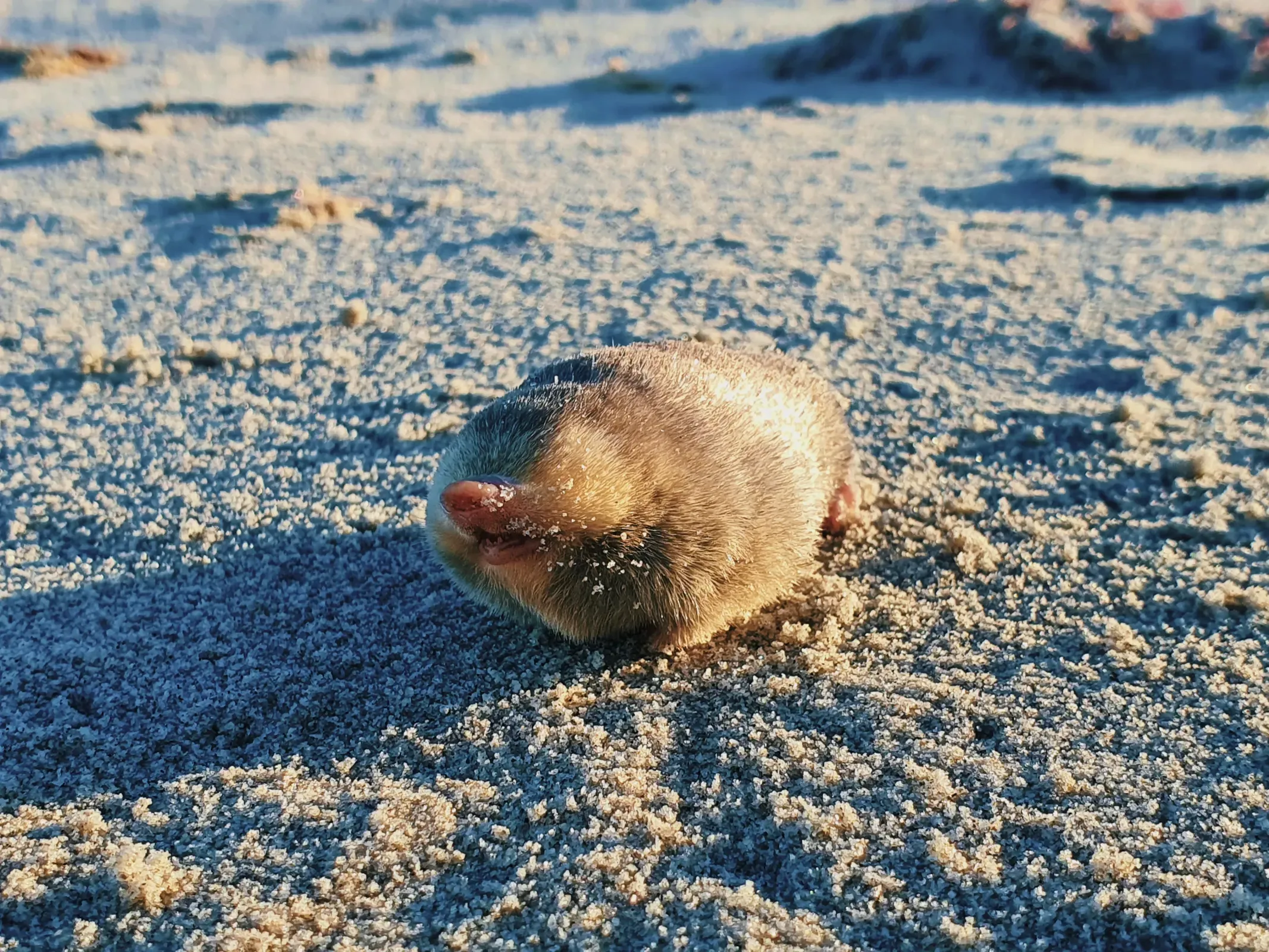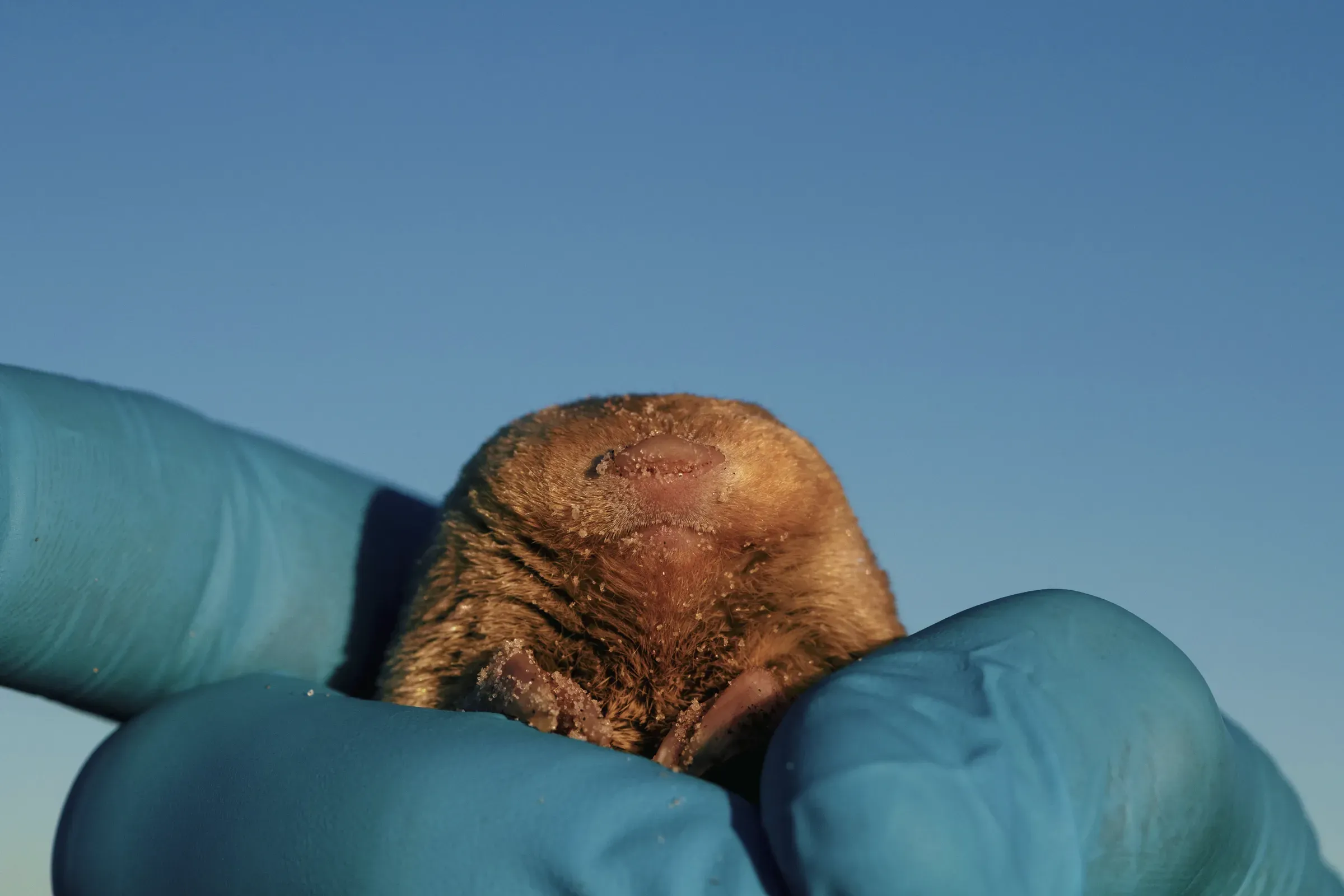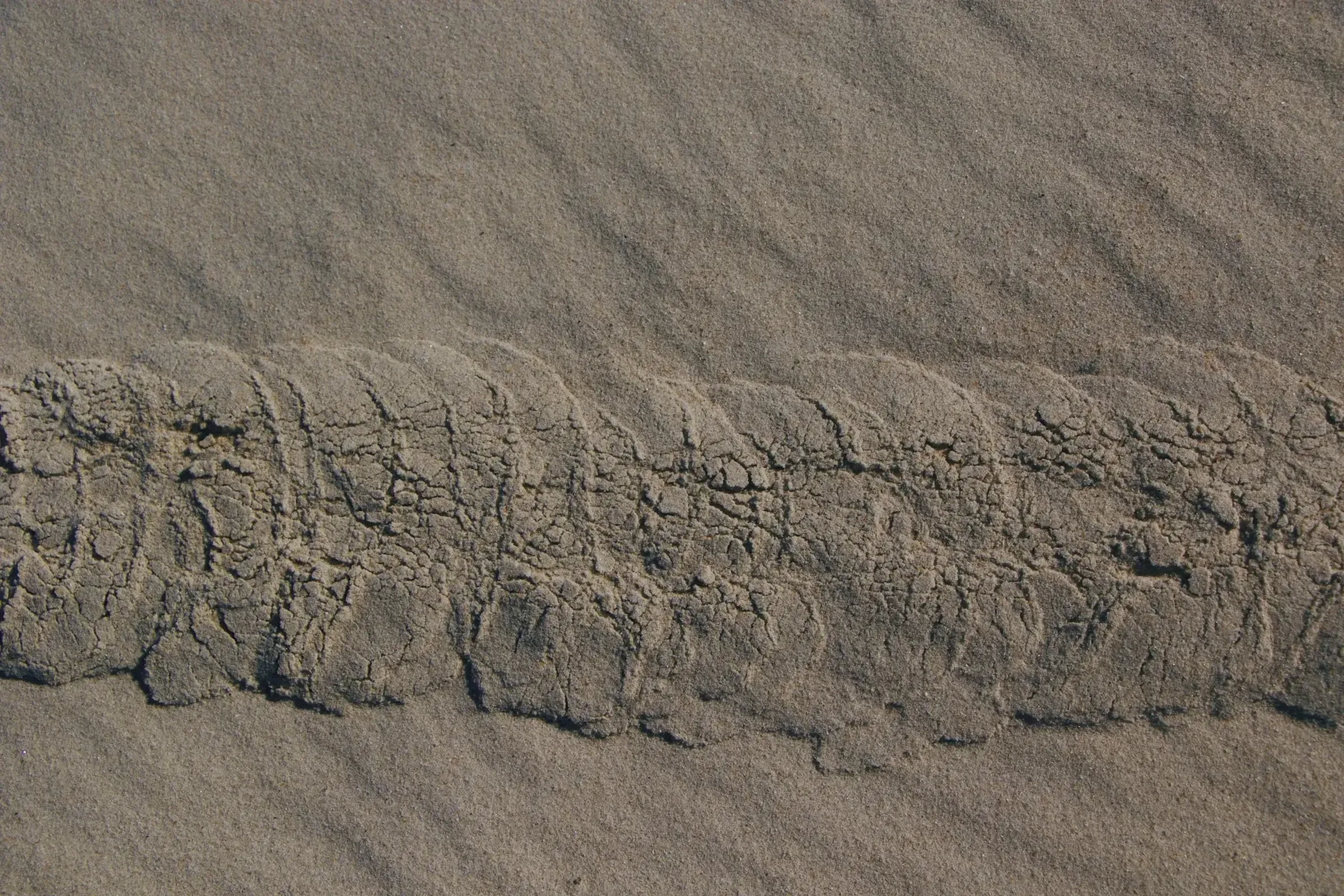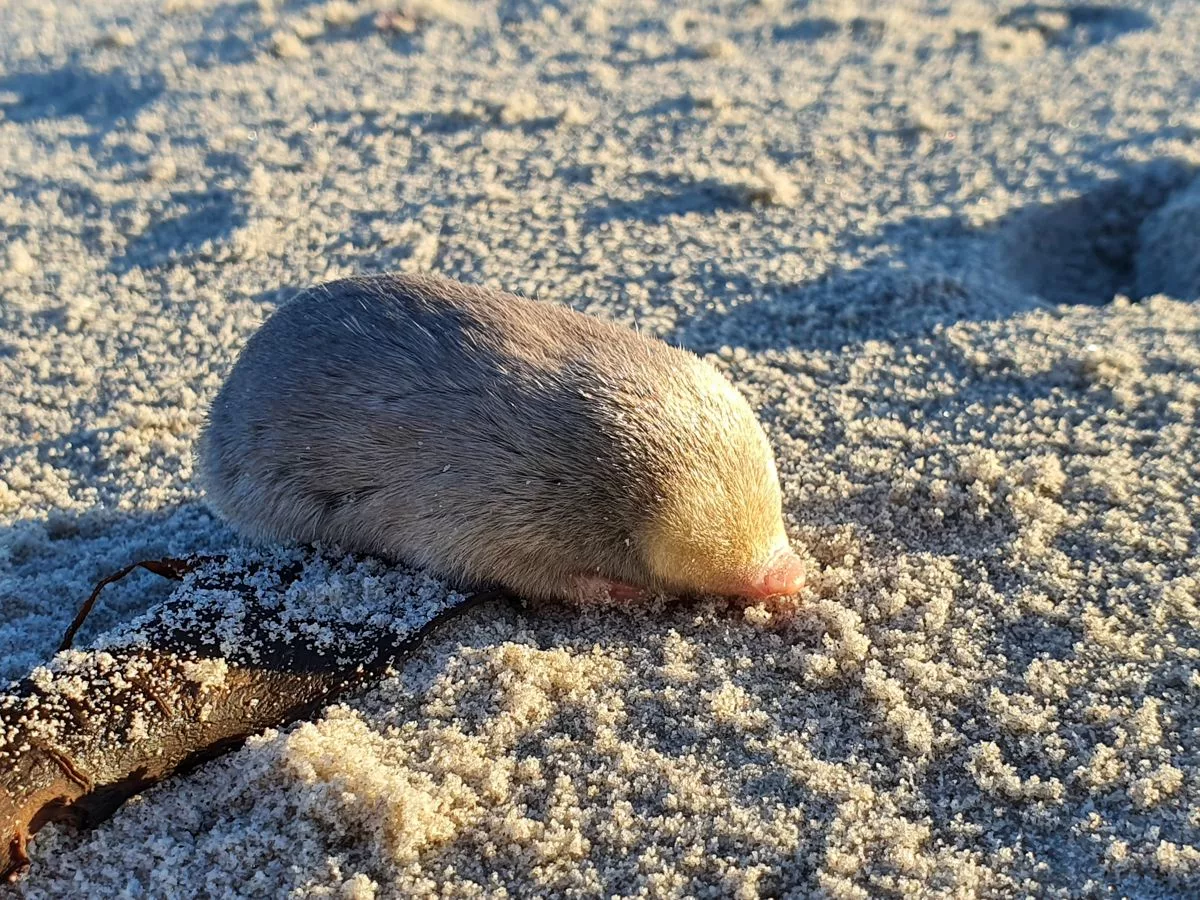In South Africa’s northwest coast, scientists from the Endangered Wildlife Trust and the University of Pretoria have rediscovered the De Winton’s golden mole, a small, shimmering creature believed to be extinct since 1936. Using a novel detection technique, environmental DNA, the team gathered soil samples and conducted genetic analysis to identify the mole’s presence. The rediscovery of the De Winton’s golden mole is a triumph for conservation science and a testament to the dedication and innovation of the team.
In the vast sand dunes of South Africa’s northwest coast, a small, shimmering creature that was once thought to be extinct has been rediscovered. The De Winton’s golden mole had not been seen in the wild since 1936, but a team of conservationists and geneticists from the Endangered Wildlife Trust (EWT) and the University of Pretoria have recently rediscovered this elusive creature, marking the 11th rediscovery among the world’s most sought-after lost species since the Search for Lost Species initiative launched in 2017.
The Dedicated Team Behind the Rediscovery
The team’s remarkable achievement has been detailed in a research paper published in the scientific journal Biodiversity and Conservation. The paper outlines the innovative and tireless efforts of the team, which included Esther Matthew, senior field officer with the Endangered Wildlife Trust. Matthew describes the project as full of excitement and challenges, requiring a dynamic team brimming with enthusiasm and innovative ideas. The team had to survey up to 18 kilometers of dune habitat daily, a task that required significant dedication and perseverance.
A Novel Detection Technique
What set this expedition apart was the utilization of a novel detection technique – environmental DNA or eDNA. eDNA refers to the genetic material shed by animals in their environment, such as skin cells, hair, and other organic matter. Golden moles, living in largely inaccessible burrows beneath the sand, have extraordinarily sensitive hearing and can detect vibrations from the surface. This, along with their elusive tunneling habits, makes them hard to spot.
The Use of eDNA in Rediscovering the De Winton’s Golden Mole
The team’s innovative use of eDNA came into play in rediscovering the De Winton’s golden mole. Despite the challenges of extracting DNA from soil, the team had been refining their skills and techniques with a quiet confidence that if the De Winton’s golden mole was present, they would be able to detect it. Samantha Mynhardt, a conservation geneticist, was integral to this process.
After gathering over 100 soil samples in June 2021, from beaches and dunes, and conducting extensive genetic analysis of each sample, the team made a remarkable discovery. Along the coast, several species of golden mole were found to inhabit the sands. Among these, they rediscovered the long-lost De Winton’s golden mole, although it took almost another year to definitively confirm this due to genetic similarities to another mole species, Van Zyl’s golden mole.
Final Confirmation of Rediscovery
The breakthrough came in January 2022 when a new gene sequence for the De Winton’s golden mole was made public. This sequence came from a more variable part of the genome, allowing a distinction between De Winton’s and Van Zyl’s moles. When the team compared their eDNA sequences from Port Nolloth, it was a clear match – leading to the final confirmation of the De Winton’s golden mole’s rediscovery.




The Importance of the Rediscovery
The rediscovery of the De Winton’s golden mole is not only a commendable achievement but also a triumph for conservation science. The EWT had been committed to rediscovering the De Winton’s golden mole for over two years, identifying potential habitats in South Africa, interviewing local communities, and even using a specially trained scent-detection border collie to track the moles. Their work did not stop with the rediscovery. Since the expedition in 2021, they have identified four more De Winton’s golden mole populations, and are now focusing on the protection of these moles and expanding their understanding of the species, with the support of the National Research Foundation’s Foundational Biodiversity Information Programme, Rainforest Trust, and Prince Bernhard Nature Fund.
The dedication of the EWT team and the use of innovative techniques have proven to be effective in fighting for the survival of endangered species. The rediscovery of the De Winton’s golden mole is a shining example of how cutting-edge science can make a significant impact in the field of conservation.
1. What is the De Winton’s golden mole and why is its rediscovery significant?
The De Winton’s golden mole is a small, shimmering creature believed to be extinct since 1936. Its rediscovery is significant because it marks the 11th rediscovery among the world’s most sought-after lost species since the Search for Lost Species initiative launched in 2017, and it is a triumph for conservation science.
2. What was the team behind the rediscovery like?
The team behind the rediscovery was described as dynamic, enthusiastic, and innovative, requiring significant dedication and perseverance. The team included Esther Matthew, senior field officer with the Endangered Wildlife Trust.
3. What is environmental DNA (eDNA)?
Environmental DNA, or eDNA, refers to the genetic material shed by animals in their environment, such as skin cells, hair, and other organic matter.
4. How did the team use eDNA to rediscover the De Winton’s golden mole?
The team used eDNA to gather over 100 soil samples in June 2021, from beaches and dunes, and conducted extensive genetic analysis of each sample. After identifying several species of golden mole inhabiting the sands, they were able to definitively confirm the rediscovery of the De Winton’s golden mole when a new gene sequence for the species became available in January 2022.
5. What is the EWT doing to protect the De Winton’s golden mole and expand their understanding of the species?
Since the rediscovery, the EWT has identified four more De Winton’s golden mole populations, and is now focusing on the protection of these moles and expanding their understanding of the species, with the support of the National Research Foundation’s Foundational Biodiversity Information Programme, Rainforest Trust, and Prince Bernhard Nature Fund.
6. What is the importance of preserving the habitat of De Winton’s golden mole?
Preserving the habitat of De Winton’s golden mole is crucial for the conservation of the species and other lost species in the region, as well as for maintaining the unique biodiversity of South Africa.








